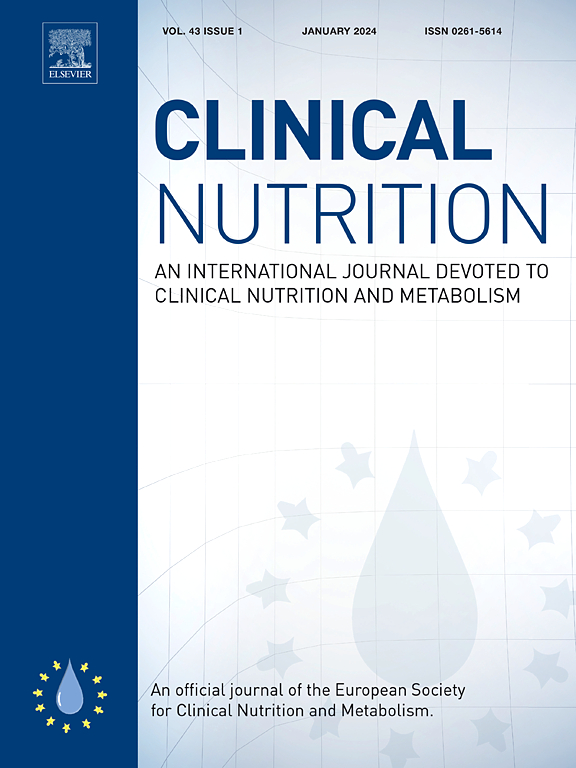整合代谢组学和机器学习以精确管理和预防亚洲人的心脏代谢风险
IF 6.6
2区 医学
Q1 NUTRITION & DIETETICS
引用次数: 0
摘要
饮食模式的快速变化导致世界范围内心脏代谢疾病(cmd)的增加,突出表明迫切需要有效的饮食策略来解决健康问题。与白种人相比,亚洲人更容易患cmd。了解导致这种易感性增加的复杂因素对于制定针对亚洲人群的有针对性的干预措施和预防措施至关重要。代谢组学在识别与CMDs相关的特定代谢标志物和途径方面发挥着关键作用,为疾病机制提供见解,并有助于创建个性化的风险概况。然而,代谢组学面临着一些挑战,包括在不同种族群体中解释结果的困难、研究设计的局限性、分析平台的可变性以及数据处理方法的不一致性。克服这些挑战需要采用先进的技术、标准化的方法和多组学数据的整合,以最大限度地发挥代谢组学在临床环境中的效用。随着代谢组学数据的数量和复杂性不断增加,机器学习(ML)算法对于有效的数据集成、解释和知识提取至关重要。先进的机器学习技术,如深度学习和网络分析,可以揭示大型数据集中隐藏的模式、关系和代谢途径,从而更深入地了解生物系统和疾病过程。通过结合代谢组学和ML,我们可以促进早期发现,实现个性化干预,并支持制定有针对性的营养策略,最终改善治疗效果,减轻该地区CMDs的社会经济负担。本文章由计算机程序翻译,如有差异,请以英文原文为准。
Integration of metabolomics and machine learning for precise management and prevention of cardiometabolic risk in Asians
Rapid changes in dietary patterns have led to a rise in cardiometabolic diseases (CMDs) worldwide, highlighting the urgent need for effective dietary strategies to address the health issues. Compared to Caucasians, Asians are more susceptible to CMDs. Understanding the complex factors driving this increased susceptibility is essential for developing targeted interventions and preventive measures for Asian populations. Metabolomics plays a key role in identifying specific metabolic markers and pathways associated with CMDs, providing insights into disease mechanisms and helping to create individualized risk profiles. However, metabolomics faces several challenges, including difficulties in interpreting results across diverse ethnic groups, limitations in study design, variability in analytical platforms, and inconsistencies in data processing methods. Overcoming these challenges requires the adoption of advanced technologies, standardized approaches, and integration of multi-omics data to maximize the utility of metabolomics in clinical settings. As the volume and complexity of metabolomic data continue to increase, machine learning (ML) algorithms have become essential for effective data integration, interpretation, and knowledge extraction. Advanced ML techniques, such as deep learning and network analysis, can reveal hidden patterns, relationships, and metabolic pathways within large datasets, leading to deeper insights into biological systems and disease processes. By combining metabolomics and ML, we can facilitate early detection, enable personalized interventions, and support the development of targeted nutritional strategies, ultimately improving therapeutic outcomes and reducing the socioeconomic burden of CMDs in this region.
求助全文
通过发布文献求助,成功后即可免费获取论文全文。
去求助
来源期刊

Clinical nutrition
医学-营养学
CiteScore
14.10
自引率
6.30%
发文量
356
审稿时长
28 days
期刊介绍:
Clinical Nutrition, the official journal of ESPEN, The European Society for Clinical Nutrition and Metabolism, is an international journal providing essential scientific information on nutritional and metabolic care and the relationship between nutrition and disease both in the setting of basic science and clinical practice. Published bi-monthly, each issue combines original articles and reviews providing an invaluable reference for any specialist concerned with these fields.
 求助内容:
求助内容: 应助结果提醒方式:
应助结果提醒方式:


